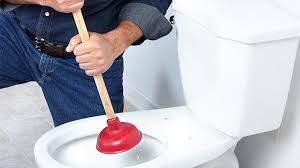A clogged toilet can be a frustrating and messy problem, but with the right approach, you can often resolve it yourself without calling a plumber. Knowing how to flush a clogged toilet properly can save you time, money, and stress. In this guide, we’ll walk you through the steps to unclog your toilet and get it flushing smoothly again.Before you begin, gather the following tools and materials:
- A plunger (preferably a flange plunger for toilets)
- Rubber gloves
- A bucket of hot water (not boiling)
- Dish soap or baking soda and vinegar
- A toilet auger (for stubborn clogs)
Now, let’s dive into the step-by-step process:
- Assess the Situation: First, check the water level in the bowl. If it’s nearly overflowing, avoid flushing again. Instead, remove some water with a bucket or cup to prevent spillage.
- Use a Plunger: Place the plunger over the drain hole, ensuring a tight seal. Push down gently at first, then increase the force with steady, rhythmic motions. Repeat this 10-15 times before lifting the plunger to check if the water drains.
- Try Hot Water and Dish Soap: If the plunger doesn’t work, pour a cup of dish soap into the bowl, followed by a bucket of hot water. Let it sit for 10-15 minutes. The soap can help lubricate the clog, while the hot water may break it down.
- Use a Toilet Auger: For persistent clogs, insert a toilet auger into the drain and turn the handle clockwise to break up or retrieve the obstruction. Be gentle to avoid scratching the porcelain.
- Flush and Test: Once the clog is cleared, flush the toilet to ensure everything is flowing properly. If the water drains slowly, repeat the process or consider calling a professional.
To prevent future clogs, avoid flushing non-flushable items like wipes, feminine hygiene products, or excessive toilet paper. Regular maintenance, such as occasional hot water flushes or using enzymatic cleaners, can also help keep your toilet running smoothly.In summary, knowing how to flush a clogged toilet is a handy skill for any homeowner. With the right tools and techniques, you can tackle most clogs quickly and effectively. If all else fails, don’t hesitate to seek professional help to avoid further damage.

